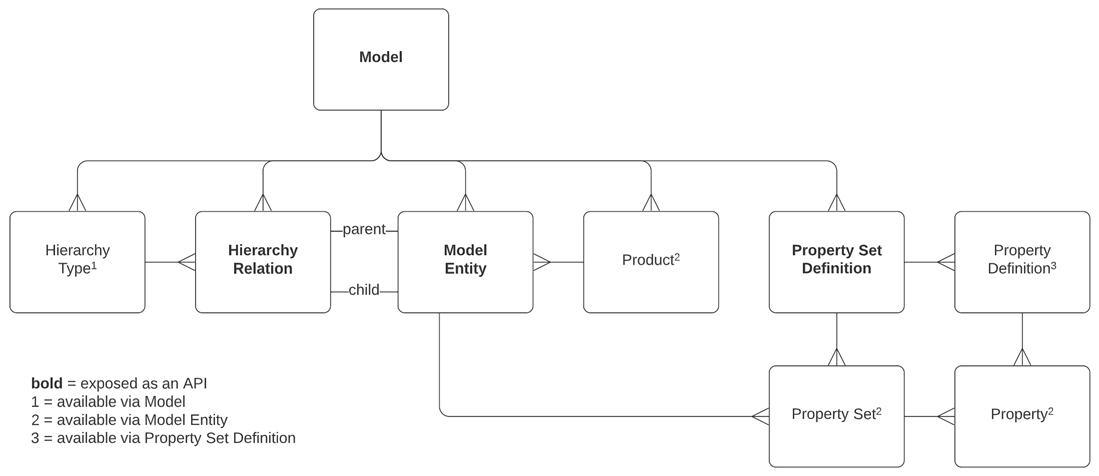Model
Introduction
Section titled “Introduction”The Model API is a service that allows you to query and access metadata, hierarchies, entities, and properties of BIM models. Once uploaded to Trimble Connect, your models become intelligent, queryable data sources. Using the Model API, you can access up-to-date model data regardless of the source model format.
Use Cases
Section titled “Use Cases”The Connect Model API allows you to accomplish a variety of tasks, for example:
- Platform-agnostic access to the granular model data
- Automated quantity take-offs from the model
- Business Intelligence (BI) use cases and reporting
Access
Section titled “Access”You need to complete the steps in the Access guide to be able to call the API.
The user must have at least read access to the model file to execute a query.
Explanation and Concepts
Section titled “Explanation and Concepts”When looking at the Connect Model API, it is good to have a basic understanding of some of the terminology:

Model (short for Building Information Model) is the container for all of its data. A Trimble Connect model is identified by its file identifier (see the Connect Core File API documentation). A model provides access to its basic metadata and some statistics of its contents. Under the hood, each model has a TrimBIM representation file (.trb) in Connect.
Model Entities
Section titled “Model Entities”A BIM model contains model entities, each representing, for example, a beam or a slab in the model in question. A model entity has an identifier and some basic and product information, all other data is organized under Property Sets (see below).
Hierarchies
Section titled “Hierarchies”Model Entities are organized in hierarchies. A model can have multiple hierarchies of different Hierarchy types. A Model entity can belong to multiple hierarchies. Examples of hierarchy type are spatial, assembly, and system hierarchies.
Property Sets
Section titled “Property Sets”Property set metadata is defined in a Property Set Definition. It includes the name of the property set and the definition of the names and types of properties included.
The actual property values for Model entities are stored in Property sets according to their associated definitions. A Model entity can have any number of Property Sets.